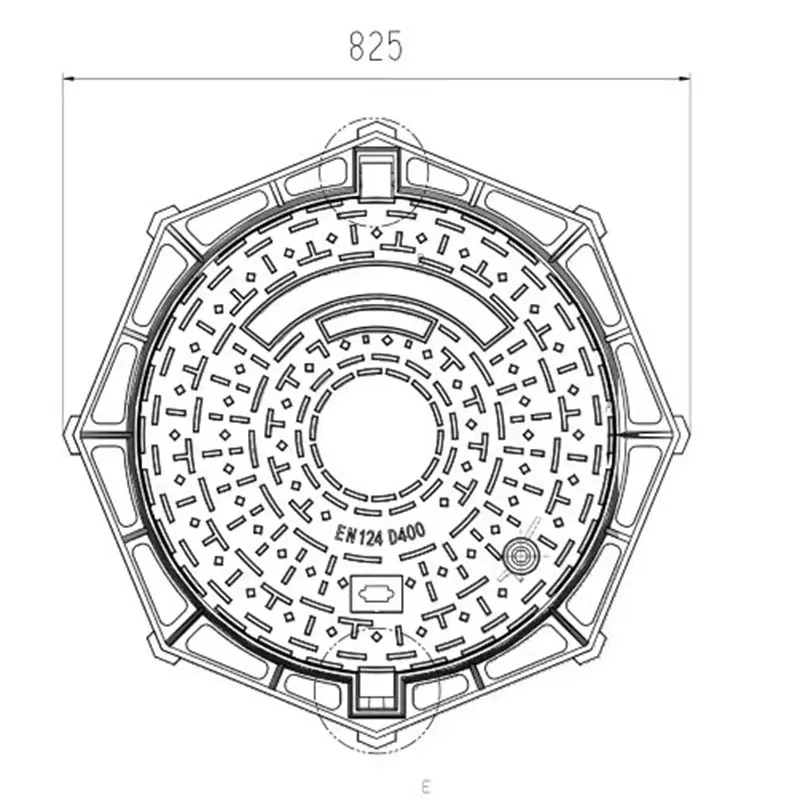Access Chamber Covers and Frames for Efficient Utility Management Solutions
Access Chamber Covers and Frames Understanding Their Importance in Infrastructure
Access chamber covers and frames play a crucial role in modern infrastructure systems, particularly in urban environments where various utilities are located beneath the ground. These covers serve as entry points to underground chambers that house essential services such as water, sewage, telecommunications, and electrical networks. This article aims to explore the significance of access chamber covers and frames, the materials used in their construction, their design considerations, and their maintenance.
Importance of Access Chamber Covers and Frames
Access chamber covers are vital for maintaining the infrastructure that supports daily life. They ensure the safety of pedestrians and vehicles while providing utilities with the ability to maintain and repair underground services efficiently. The covers must endure significant weight and impact, which is why they are designed to be both robust and secure.
In addition to safety and accessibility, these covers affect urban aesthetics. Well-designed and maintained access chamber covers can blend into the urban landscape, enhancing the overall appearance of streets and public spaces. Conversely, poorly designed or damaged covers can become eyesores, detracting from the environment and potentially leading to accidents.
Materials Used
Access chamber covers and frames are typically made from a variety of materials, each with its pros and cons. Common materials include
1. Cast Iron This is one of the most traditional materials used for access chamber covers. Cast iron offers excellent strength and durability, making it suitable for heavy traffic areas. However, it can be prone to rust and requires regular maintenance to prevent corrosion.
2. Steel Galvanized or stainless steel is often chosen for its strength and resistance to corrosion. Steel covers are lighter than cast iron, which can ease installation, but they may not be as durable in high-impact scenarios.
3. Composite Materials Recently, composite materials have gained popularity due to their lightweight nature and resistance to corrosion. These covers can match the strength of metal while providing better resistance to environmental factors, such as salt and chemicals.
4. Plastic High-density polyethylene (HDPE) is utilized for lighter applications. These covers are not suitable for heavy traffic areas but are excellent for pedestrian zones or residential areas due to their economical nature and resistance to chemicals.
Design Considerations
access chamber cover & frame

The design of access chamber covers and frames involves several considerations to ensure functionality and safety
- Load Rating Covers must be designed to withstand specific load conditions, determined by their location—whether pedestrian walkways, roadways, or heavy-traffic areas.
- Security Features Increasingly, security features such as lockable mechanisms are integrated to prevent unauthorized access and protect vital infrastructure.
- Non-Slip Surface To ensure safety, access chamber covers often incorporate non-slip textures that provide traction, especially under wet conditions.
- Visibility Reflective markings or bright colors can be applied to enhance visibility, reducing the risk of accidents, particularly at night.
Maintenance of Access Chamber Covers and Frames
Regular maintenance is essential to prolong the lifespan of access chamber covers and frames. This includes
- Inspection Routine inspections help identify any wear and tear, corrosion, or damage that may compromise safety and functionality.
- Cleaning Keeping the covers clean prevents debris build-up, which can interfere with their function and aesthetics.
- Repairs and Replacement Any damaged covers should be repaired or replaced promptly to ensure safety and functionality.
Conclusion
Access chamber covers and frames are critical components of our urban infrastructure. They not only facilitate maintenance and repair of essential services but also play a significant role in ensuring the safety and aesthetics of urban spaces. As urban areas continue to grow and evolve, the importance of durable, well-designed access chamber covers and frames will only increase. By understanding their significance, we can appreciate the thought that goes into these seemingly simple yet essential elements of our built environment. Investing in quality materials, thoughtful design, and rigorous maintenance practices will ensure that we continue to support the infrastructure that is vital for daily life.
-
The Smarter Choice for Pedestrian AreasNewsJun.30,2025
-
The Gold Standard in Round Drain CoversNewsJun.30,2025
-
The Gold Standard in Manhole Cover SystemsNewsJun.30,2025
-
Superior Drainage Solutions with Premium Gully GratesNewsJun.30,2025
-
Superior Drainage Solutions for Global InfrastructureNewsJun.30,2025
-
Square Manhole Solutions for Modern InfrastructureNewsJun.30,2025
-
Premium Manhole Covers for Modern InfrastructureNewsJun.30,2025
